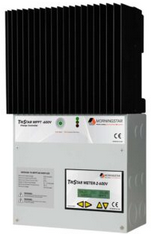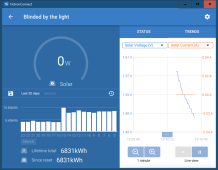Not to sure if Blocking & Reversing Diodes are the same... let me google here..... yes, they are the same but see video below why I needed these. I learned this in one of
@Will Prowse Prowse videos on combiner boxes:
Basically my 6string array has minor string-shading issues due to a tree. These reversing (possibly blocking) diodes are to prevent a shaded string from pulling voltage down off my producing strings.
*We had to put the array on the coop due to zoning restrictions/taxes, wasn't my first choice.
Maybe Will will chime in here

Here's the video, which after I made damn sure to order a PV Combiner Box with these.
another video mentioning them.
Here is the unit I order for other newbies, and like the video above many of the connections were not torqued properly, always check*
6-String PV box with Diodes




